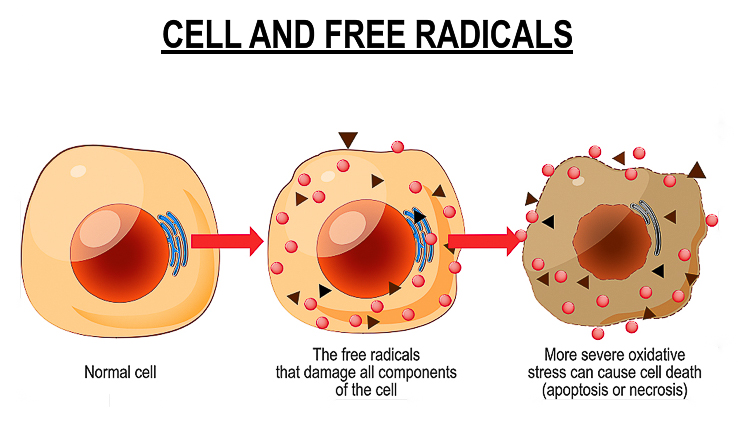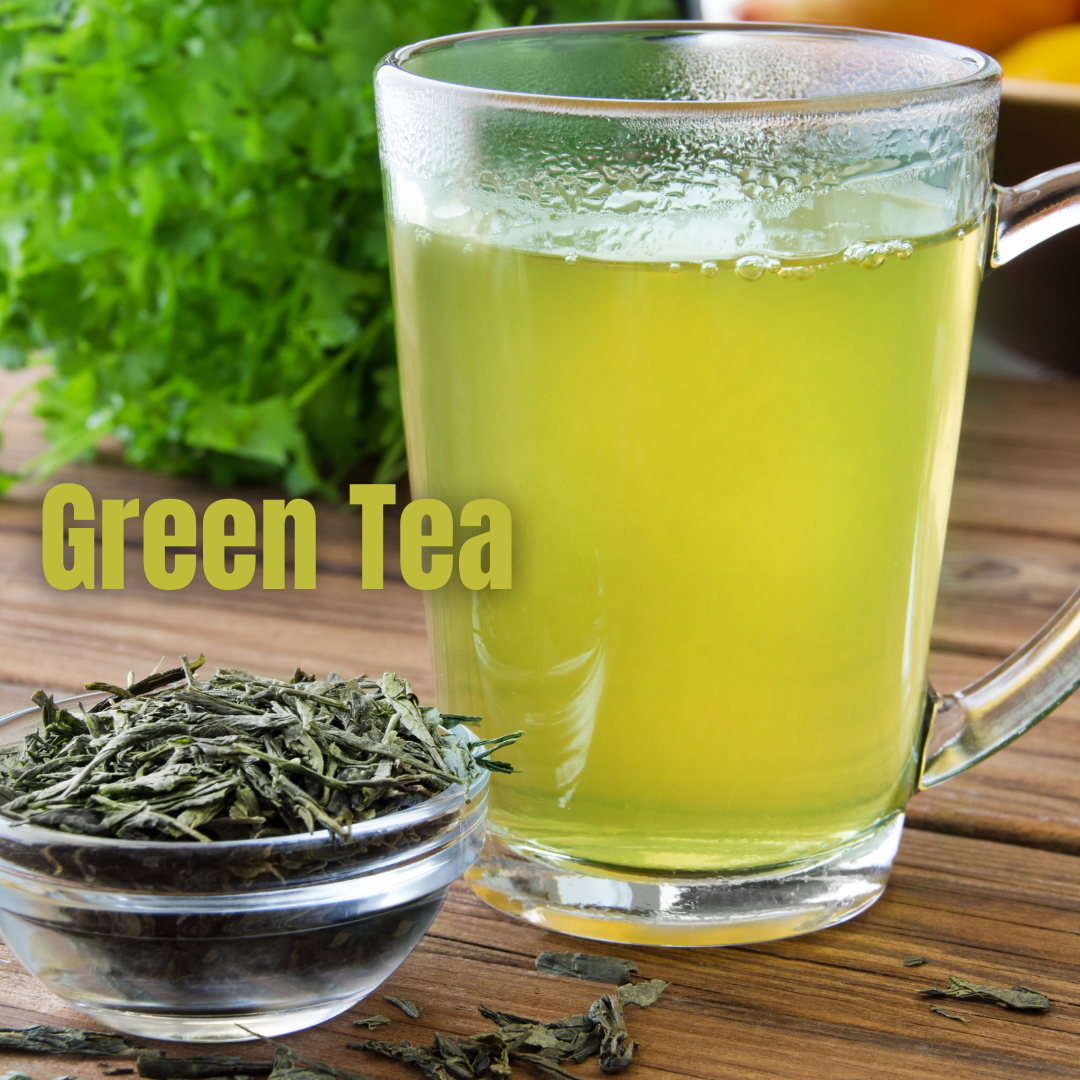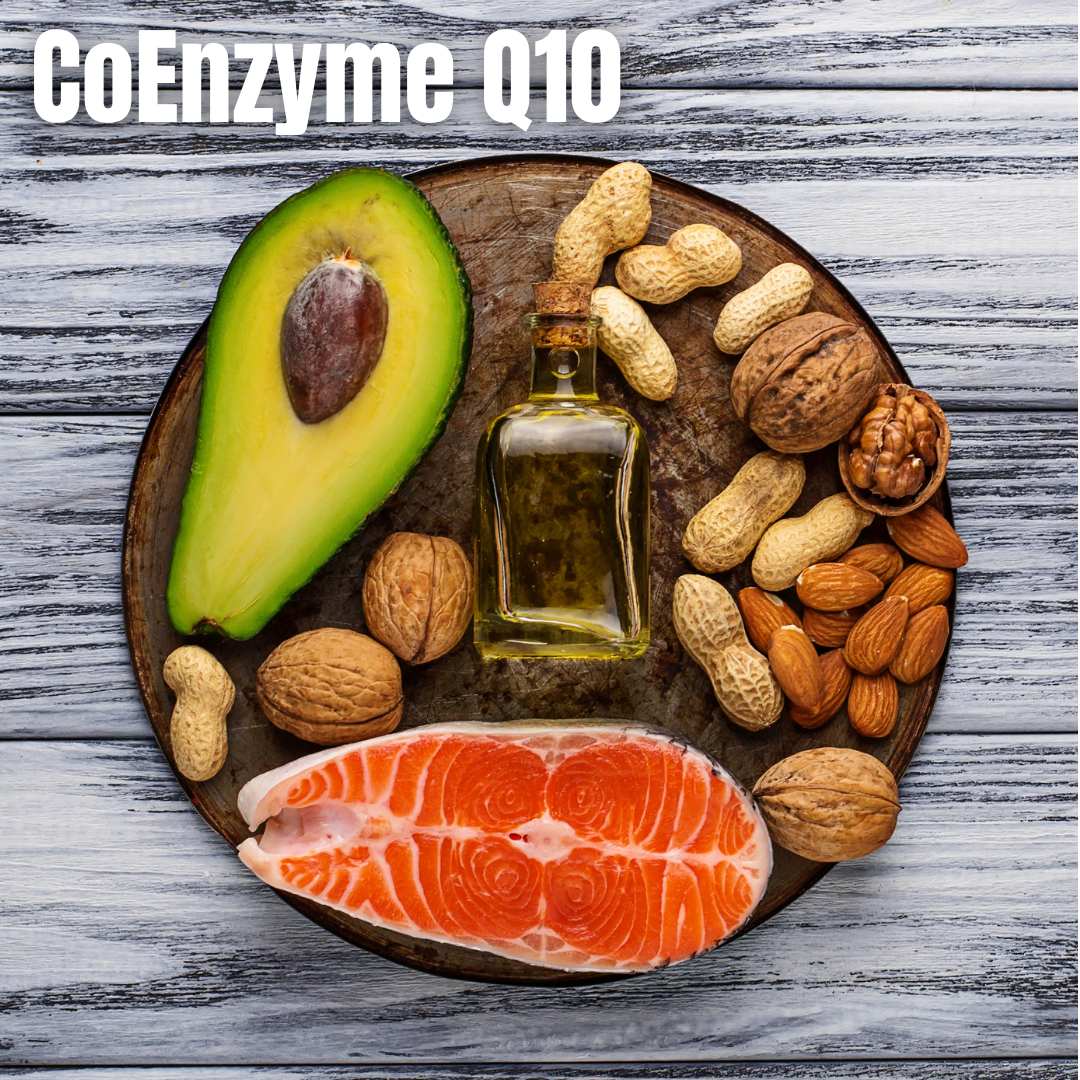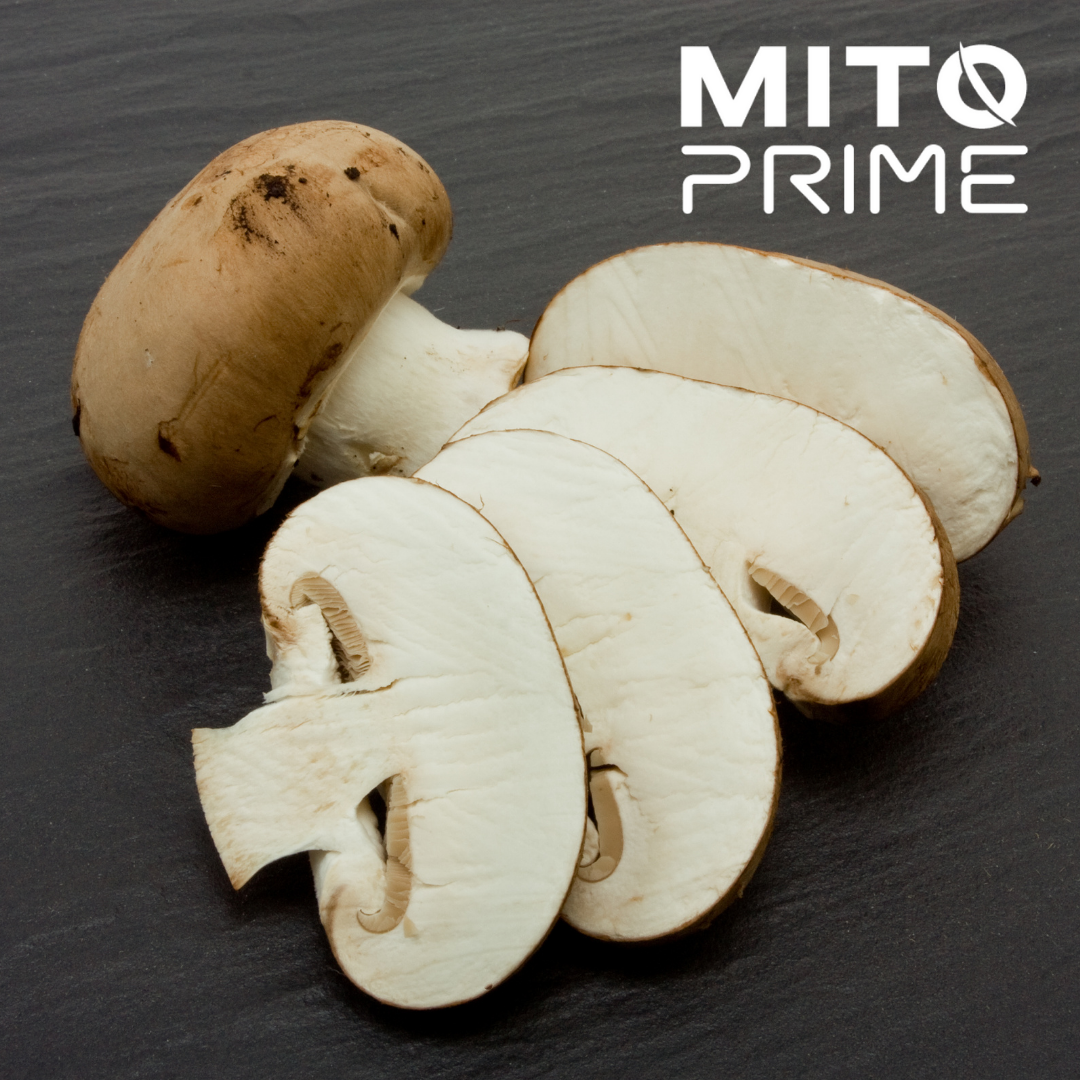Rating The Antioxidants

In the body, the balance between antioxidants and prooxidants, also known as reactive oxygen species (ROS), helps keep oxidative stress under control. Oxidative stress is the imbalance between the production and accumulation of ROS in cells and tissues and the body’s ability to detoxify and remove these reactive products. Over time, a prolonged imbalance ultimately leads to aging and may result in the onset and progression of certain diseases.
ROS and other prooxidants comprise both free radicals such as superoxide and non-radicals such as peroxides. These molecules are continuously produced in the cells and are involved in physiological events such as cell differentiation, immune defense and cellular signaling.1

 Indeed, oxidative processes are required, and ROS can be rapidly generated and degraded when needed. Antioxidants can keep the balance between beneficial and detrimental effects of ROS at low concentrations, providing protection to lipids, DNA and proteins, as well as to signalling pathways that help regulate energy metabolism.1
Indeed, oxidative processes are required, and ROS can be rapidly generated and degraded when needed. Antioxidants can keep the balance between beneficial and detrimental effects of ROS at low concentrations, providing protection to lipids, DNA and proteins, as well as to signalling pathways that help regulate energy metabolism.1
A high antioxidant capacity can help keep the balance and reduce the progression of oxidation and aging in the body. Therefore, supplementing with antioxidants is considered a first-line defence to reduce ROS, slow aging, regenerate the body and prevent age-associated disease.
Although antioxidants can be obtained via a healthy and wholesome fresh diet loaded with plants (vegetables and fruits), taking antioxidants in concentrated doses can be more effective. There are many antioxidant supplements to choose from, ranging from your basic vitamin C to more complex plant flavonoids. Not sure what to take for your specific need? We’re rating the top antioxidants right here!
Vitamin C

Vitamin C, also known as ascorbic acid, is probably the most commonly available antioxidant. It’s found in high concentrations in food sources such as citrus fruits, bell peppers and even broccoli.
This water-soluble antioxidant reacts with ROS, quenching them and promoting conversion into poorly reactive chemicals, thus efficiently reducing and suppressing free radicals and oxidative stress.2
Pros
Vitamin C can help reduce metal ions, helping protect DNA. It can also help protect lipid membranes. Some research suggest that vitamin C may help increase bioavailability of nitric oxide, helping improve blood flow and reducing blood pressure.1 It’s been found to reduce risk factors for heart disease, including lowering blood cholesterol and triglyceride levels, and may boost immunity. Vitamin C is also involved in the regeneration of another antioxidant, vitamin E.1
Vitamin C is relatively inexpensive when purchased as a supplement. It’s also easy to get your daily intake, as it’s available from many commonly eaten foods.
Cons
Despite showing benefits in vitro, intervention studies with vitamin C in humans have shown mixed results. It’s been suggested that vitamin C may only work in those who are experiencing higher oxidative damage.
It’s also been shown that consuming vitamin C from vitamin C-rich foods (not supplements) may be more effective. Additionally, foods that are rich in vitamin C may also be rich in other antioxidants that could contribute to their overall effectiveness and health.3 For these reasons, it may be better to just stick to a diet rich in vitamin C rather than spend your money on a supplement form.
Rating: 
Vitamin A

Vitamin A is a group of fat-soluble compounds including retinol, retinal and retinyl esters. Vitamin A can be obtained from food in two different forms. From animal products such as fish and dairy, retinol and retinyl esters can be obtained. In plant foods, including green, yellow, and orange fruits and vegetables, and some oils, carotenoids are abundant.
From these sources, the body converts them into active forms of vitamin A, including retinal and retinoic acid. The body stores vitamin A for later use, mostly in the liver and fat tissue in the form of retinyl esters.4 When required by the body, these esters are broken down into usable forms, which attach to retinol binding proteins entering the bloodstream, where it can be transported and used where required.4
Pros
Vitamin A is best known for the important role it plays in vision and the protective effects of the eye. It also plays an important role in immune function. Several studies have shown that supplementation with vitamin A can reduce the severity of illness, infection and inflammation.5 In addition, the occurrence of severe infections and inflammation can reduce vitamin A status.
Vitamin A influences cellular immunity in a wide variety of ways. It's very important for the activation of T-cells. These are essential for the inflammatory and immune response. Vitamin A also initiates production of proinflammatory cytokines and then promotes antibody responses.5
Cons
Because vitamin A can be obtained from many foods, deficiency is rare, although it can happen if you’re not eating food rich in preformed vitamin A, which can happen if you’re vegan. On the other side, if you’re a veggie skipper, you’re probably not getting enough carotenoids.
Vitamin A toxicity can occur, particularly with supplementation. Because vitamin A is a fat-soluble vitamin, it’s stored in the body and used when required. Unhealthy levels may build up over time. Supplementation with vitamin A should be limited to low-dose supplements, and don’t consume above the recommended daily intake of 700 to 900 micrograms.
Rating: 
Glutathione

Glutathione is considered one of the most powerful antioxidants. This is a thiol-based compound made within the liver from three amino acids: glycine, cysteine and glutamine. Glutathione helps protect cells against oxidative stress-induced cellular damage, including chemical toxicity.
It’s a potent free radical and reactive oxygen species scavenger. It reacts with various molecules (such as metabolites and xenobiotics) to form conjugates.6 Glutathione functions as a thiol buffer for many cellular proteins (such as metallothioneins and thioredoxins).6
It’s also an essential cofactor for many enzymes, and it’s involved in several metabolic and signaling pathways. Glutathione is also critical for the regeneration of other antioxidants such as vitamin E and vitamin C.6
Low glutathione levels are associated with poor nutrition, aging, environmental heavy metal toxins, stress and even neurodegenerative disorders.
Pros
Glutathione is involved in tissue building and repair, immune function and the detoxification process.6 Glutathione and glutathione-dependent enzymes are necessary for maintaining the normal redox balance in the body and help in cell survival under stress conditions.7
In addition, glutathione-based enzymes help in the removal of various carcinogenic compounds offering a chemo-preventive property, whereas the glutathione system plays a significant role in regulating the cellular survival by offering redox stability.7
Glutathione has been shown to be helpful in the treatment of liver damage, including alcoholic and nonalcoholic fatty liver disease.8 Intravenous administration of high doses of glutathione in patients with chronic liver disease has shown that glutathione significantly improves the rate of some hepatic tests (e.g., bilirubin, GOT, GPT and GT) even several months after treatment interruption.8
Cons
Because the dysfunction of the glutathione redox system appears to cause a variety of diseases, including neurodegenerative disorders, use of glutathione as a supplement is of high interest. Unfortunately, the effectiveness of glutathione as a therapeutic agent is limited because of its low oral bioavailability.
The best way to get glutathione is intravenously, topically or as an inhalant. Some studies have investigated ways to cope with this difficulty, including the use of precursors such as N-acetyl cysteine and chemical modification such as methylation to increase absorption and bioavailability.9 If supplementing with glutathione, consider taking NAC alongside this antioxidant.
Rating: 
Vitamin E

Vitamin E is a group of fat-soluble compounds including four tocopherols and four tocotrienols, with alpha-tocopherol being the most biologically available and most common form supplemented. It’s found within nature in oils, nuts and seeds.10
Vitamin E is considered a potent free-radical scavenger in membranes and lipoproteins that quenches fatty acid peroxyl radicals and yields tocopheroxyl radicals that may be further reduced by ubiquinol or vitamin C to regenerate vitamin E.1 Vitamin E is widely distributed in the body, scavenging free radicals produced by the mitochondria and reducing lipid peroxidation and membrane damage.
Pros
Vitamin E has many roles in the body, and it may protect cells from damage brought on by workouts. In one study, vitamin E supplementation provided protection from inflammation, exercise-induced muscular and oxidative damage, fatigue and muscle force loss induced by exercise.11
Short-term use of vitamin E has been shown to improve performance during high-intensity exercise with short recovery periods.10 Acute supplementation may therefore be beneficial, specifically related to performance adaptations.
Cons
Despite some positive research on the short-term use of vitamin E, there’s actually still no convincing evidence to support vitamin E supplementation for improving performance. In fact, it may prevent the signaling of important adaptations such as muscle mitochondrial biogenesis, changes in aerobic capacity, muscle strength or muscle hypertrophy and endurance performance!12
Chronic vitamin E supplementation has been shown to impair performance and isn’t recommended for athletes.13 Current research fails to show any consistent positive effects of supplementation on health or performance.
Rating: 
Green Tea

Green tea, also known as Camellia sinesis, is considered the tea with the highest number of antioxidants, including polyphenols. From these polyphenols, the most active antioxidants are the catechins.14
Catechins exhibit the strong property of neutralizing reactive oxygen species (ROS) and reactive nitrogen species (RNS). The group of green tea catechin derivatives includes epicatechin (EC), epigallocatechin (EGC), epicatechin gallate (ECG) and epigallocatechin gallate (EGCG).15 These are potent anti-inflammatory compounds and can also have a metabolic effect.
EGCG is the most abundant catechin, representing 50 to 80 percent of the total catechins in green tea.15 It’s also considered to be the major contributor to the various health benefits of green tea.
Pros
Green tea extract is an effective thermogenic. The catechins and caffeine found in green tea have a synergistic effect in the body that can increase fat burning and boost metabolic rate. In one study, relative to placebo, green tea extract significantly increased 24-hour energy expenditure and fat oxidation.16 Another study showed similar results, increasing fat oxidation by 17 percent compared to those taking a placebo.17
In addition to green tea’s metabolic benefits, it’s also been shown to be effective for protecting the skin from UV damage, including increasing collagen and elastin fibre content, and suppressing collagen-degrading enzymes, therefore acting as a potent anti-wrinkle agent.18
Green tea’s strong antioxidant abilities have shown it to be effective as an anti-inflammatory, anti-microbial, anti-viral, anti-diabetic and much more.
Cons
Green tea’s antioxidant abilities are strong. The biggest drawback of green tea is when it comes to supplementation. Many studies have shown that green tea drinkers have lower risks for various types of disease. However, how much of the active polyphenols is required to provide antioxidant protection is still not clear.
If purchasing a green tea supplement, make sure it provides at least 50 percent of the active catechins, particularly EGCG. Additionally, it’s not known if drinking green tea, which contains more than the active antioxidants, is more effective than just using the extract.
Rating: 
Coenzyme Q10

Coenzyme Q10 (CoQ10), or ubiquinone, is a unique lipid-soluble antioxidant that’s also known as a pseudo-vitamin because it’s vital for survival. It plays a crucial role in mitochondrial bioenergetics. Synthesis of CoQ10 occurs in the mitochondrial matrix membrane and forms a critical component of the electron transport chain (ETC), transporting electrons between complexes.19
The major function of CoQ10 is in the mitochondrial ETC. CoQ10 accepts electrons from different donors. It’s therefore a structural part of the complexes in the ETC.
CoQ10 cycles between different forms, allowing transfer of electrons from different complexes in the respiratory chain, helping generate energy via adenosine triphosphate (ATP) in the process.19 CoQ10 is also capable of recycling and regenerating other antioxidants such as vitamin E and vitamin C.
Pros
CoQ10 offers antioxidant protection by maintaining the reduced state of vitamin E and vitamin C and by regulating apoptosis (cell death) by preventing lipid peroxidation of the membrane phospholipids.20
Evidence suggests that part of CoQ10’s antioxidant effects is by enhancing the enzymatic activity of the antioxidant proteins superoxide dismutase and glutathione peroxidase.20
Other functions of CoQ10 in the cell membrane include metabolic regulation, cell signaling and modulation of gene expression involved in the inflammatory response, and cell growth through regulation of cytosolic redox intermediates.20 In addition, it’s been shown to protect proteins from oxidation and to prevent oxidative DNA damage such as strand breakages.
CoQ10 supplementation at 300 milligrams per day was reported to significantly enhance antioxidant enzyme activities and lower inflammation in patients who have coronary artery disease during therapy with statins, which can lower CoQ10 synthesis.21
CoQ10 has been shown to help reduce inflammation in the brain, heart and lungs, help protect the skin from aging, improve exercise capacity and reduce fatigue.
Cons
Many studies have shown the positive benefits of CoQ10 when it comes to the treatment of diseases when the inflammatory response and oxidative stress is high. Less positive benefits have been observed when it comes to CoQ10 and exercise.
In a recent study, 15 exercise-trained individuals (10 men and 5 women aged 30 to 65) received 300 milligrams of reduced CoQ10 per day or a placebo for 4 weeks in a random-order, double-blind, crossover design.22 Treatment with CoQ10 resulted in a significant increase in total blood CoQ10 and reduced blood CoQ10 but didn’t translate into improved exercise performance or decreased oxidative stress.22
CoQ10 can be purchased in two different formats—ubiquinol and ubiquinone—and because it’s fat soluble, absorption can be low. New formats of CoQ10 could increase bioavailability and effectiveness. CoQ10 can also interact with other supplements and medications.
Rating: 
Resveratrol

Resveratrol is a natural polyphenol compound that is found in many foods, including grapes, red wine, and blueberries. This compound is mostly concentrated in the skin and seeds of grapes and berries.
Resveratrol works by modulating cell-signaling pathways, including adenosine monophosphate-activated protein kinase (AMPK), which is a key fuel sensor of cellular energy status, regulating cellular and whole-body homeostasis.
The variety of molecular mechanisms mediated by resveratrol translates into many biological actions in the body.
Pros
Resveratrol has been shown to have biological properties, including antioxidant, anti-inflammatory, immunomodulatory, hypolipidemic and hypotensive. It has also been shown to be effective against aging, suppressing oxidative damage, inhibiting inflammatory response and improving mitochondrial function.23
It has been shown to block low density lipoprotein (LDL) cholesterol oxidation, helping lower cardiovascular inflammation and reduce the risk for cardiovascular disease. Resveratrol has also been shown to suppress inflammatory cytokines induced by beta-amyloids in neuron cells, suggesting a neuroprotective effect.24
Other studies have shown resveratrol to be effective for lowering blood pressure by helping the body produce more nitric oxide, increasing vasodilation of blood vessels.25
Cons
One study showed that resveratrol plus exercise training blunted the positive effects of the exercise training. In this study, 27 healthy, inactive, aged men were randomized to receive either 250 milligrams of trans-resveratrol or placebo for 8 weeks and were subjected to concomitant high-intensity exercise.26
Results showed that, whereas exercise training effectively improved several cardiovascular health parameters in aged men, resveratrol supplementation somehow blunted most of these effects, leading, among other results, to a significantly lower improvement in the training-induced increase in maximal oxygen uptake.26
Therefore, although resveratrol may be great for certain antioxidant benefits, it may not be the best when it comes to exercise.
Rating: 
L-Ergothioneine – MitoPrime®

L-ergothioneine (ET) is a thiol form of the natural amino acid histidine that can be considered a master antioxidant. Like glutathione, L-ergothioneine is a thiol-based antioxidant. L-ergothioneine is also found naturally present in the body and has been associated with aging and aging prevention.
Although L-ergothioneine can be obtained from the diet and is found in plants and foods, including mushrooms, supplementation with L-ergothioneine can have a more profound effect on aging prevention. NNB Nutrition has developed a patent form of L-ergothioneine known as MitoPrime, which has been shown in studies and clinical trials to be a far superior form of L-ergothioneine but also a superior antioxidant, with greater bioavailability than other antioxidants on this list.
 L-ergothioneine is more resistant to oxidation, unlike glutathione, which is rapidly oxidized. L-ergothioneine can scavenge reactive oxygen species (ROS), reactive nitrogen species (RNS) and even reactive chlorine species (RCS), protecting cells from damage.27 L-ergothioneine acts as a strong antioxidant and anti-inflammatory compound. Additionally, it prevents lipid peroxidation, has anti-inflammatory properties and protects both mitochondria and DNA from damage!
L-ergothioneine is more resistant to oxidation, unlike glutathione, which is rapidly oxidized. L-ergothioneine can scavenge reactive oxygen species (ROS), reactive nitrogen species (RNS) and even reactive chlorine species (RCS), protecting cells from damage.27 L-ergothioneine acts as a strong antioxidant and anti-inflammatory compound. Additionally, it prevents lipid peroxidation, has anti-inflammatory properties and protects both mitochondria and DNA from damage!
L-ergothioneine also acts as a senolytic, which destroys old cells to rejuvenate, turning back the progression of age-related conditions, including wrinkles. Senescent cells accumulate in many tissues, including the skin, as a result of the aging process. L-ergothioneine works by clearing out damaged and dying cells that are taking up space.
Pros
L-ergothioneine is not only a potent antioxidant but also an extremely effective and adaptative one. L-ergothioneine is effective at moving throughout the body via L-ergothioneine transporters to where it is needed most, at the site of oxidative damage, which may include tissue injury, toxin exposure or disease.28
 In one study, L-ergothioneine supplementation resulted in L-ergothioneine levels in plasma and whole blood that were significantly elevated and continued to elevate in the blood for up to 4 weeks after administration!29 This demonstrates that L-ergothioneine retention in the body is extremely high.
In one study, L-ergothioneine supplementation resulted in L-ergothioneine levels in plasma and whole blood that were significantly elevated and continued to elevate in the blood for up to 4 weeks after administration!29 This demonstrates that L-ergothioneine retention in the body is extremely high.
When it comes to comparisons versus other antioxidants, L-ergothioneine comes out on top, outperforming vitamin C, CoQ10 and glutathione for scavenging ability of free radicals.30
In another study, L-ergothioneine was found to eliminate all oxidants up to 3000 percent better than glutathione and decrease lipid peroxidation by 200 percent versus glutathione31. It also has a higher half-life, 5400 percent that of glutathione! Even compared to polyphenols, MitoPrime L-ergothioneine provides eight times more antioxidant protection.
Compared with CoQ10, L-ergothioneine was more than twice as effective when cells were exposed to a toxin and analyzed for their ability to limit lipid peroxidation. The study also found ergothioneine was 271 percent better than CoQ10.32
 If that’s not enough reason to use MitoPrime L-ergothioneine, preliminary studies on ergothioneine have shown some very promising anti-aging skin benefits. L-ergothioneine has been shown to prevent skin damage brought on by UV damage, repair skin from damage and help prevent future damage. It helped protect against photo-aging associated mitochondrial DNA “common deletion,” helping protect the mitochondrial DNA from ROS.33
If that’s not enough reason to use MitoPrime L-ergothioneine, preliminary studies on ergothioneine have shown some very promising anti-aging skin benefits. L-ergothioneine has been shown to prevent skin damage brought on by UV damage, repair skin from damage and help prevent future damage. It helped protect against photo-aging associated mitochondrial DNA “common deletion,” helping protect the mitochondrial DNA from ROS.33
It’s also been shown to increase collagen formation, inhibit collagen breakdown and reduce skin inflammation and mitochondrial damage to skin. It may also increase mitochondrial biogenesis in skin cells.
MitoPrime is available in a relatively small daily dose, depending on your need, and can be found in anti-aging, health and wellness products, stacked with some of the other common antioxidants in this list.
But what’s even more interesting is that NNB Nutrition has also combined MitoPrime ergothioneine in a unique and convenient format compared to other antioxidants, in a tasty gummy combined with another great ingredient for skin health, collagen.

Cons
It’s hard to find any cons when it comes to ergothioneine, particularly MitoPrime’s ergothioneine. Not only is it a potent antioxidant, but it has so many benefits when it comes to aging and health that you’ll be hard-pressed to find a reason not to use it, whether in a skin health supplement or within a general health and wellness antioxidant supplement to support healthy aging.
Rating: 
 If you’re looking for more information on MitoPrime, NNB Nutrition and its other products, visit nnbnutrition.com.
If you’re looking for more information on MitoPrime, NNB Nutrition and its other products, visit nnbnutrition.com.
References:
- Conti V, Izzo V, Corbi G, et al. Antioxidant Supplementation In The Treatment Of Aging-Associated Disease. Front Pharmacol. 2016 Feb 12;7:24. doi: 10.3389/fphar.2016.00024.
- Pizzino G, Irrera N, Cucinotta M, et al. Oxidative stress: harms and benefits for human health. Oxid Med Cell Longev. 2017;2017:8416763. doi: 10.1155/2017/8416763.
- Ye Z, Song H. Antioxidant vitamins intake and the risk of coronary heart disease: meta-analysis of cohort studies. Eur J Cardiovas Prev Rehabil. 2008 Feb;15(1):26-34. doi: 10.1097/HJR.0b013e3282f11f95.
- Braakhuis AJ, Hopkins WG. Impact of dietary antioxidants on sport performance: a review. Sports Med. 2015 Jul;45(7):939-55. doi: 10.1007/s40279-015-0323-x.
- Tepasse PR, Vollenberg R, Fobker M, et al. Vitamin A plasma levels in COVID-19 patients: A prospective multicenter study and hypothesis. Nutrients. 2021 Jun 24;13(7):2173. doi: 10.3390/nu13072173.
- Schmitt B, Vicenzi M, Garrel C, Denis FM. Effects of N-acetylcysteine, oral glutathione (GSH) and a novel sublingual form of GSH on oxidative stress markers: A comparative crossover study. Redox Biol. 2015 Dec;6:198-205. doi: 10.1016/j.redox.2015.07.012.
- Narayanankutty A, Job JT, Narayanankutty V. Glutathione, an antioxidant tripeptide: dual roles in carcinogenesis and chemoprevention. Curr Protein Pept Sci. 2019;20(9):907-917. doi: 10.2174/1389203720666190206130003.
- Detico P, Volpe A, Buongiorno R, et al. Glutathione in the treatment of chronic fatty liver diseases. Recenti Prog Med. 1995 Jul-Aug;86(7-8):290-3.
- Homma T, Fujii J. Application of glutathione as anti-oxidative and anti-aging drugs. Curr Drug Metab. 2015;16(7):560-71. doi: 10.2174/1389200216666151015114515.
- Higgins MR, Izadi A, Kaviani M. Antioxidants and exercise performance: With a focus on vitamin E and C supplementation. Int J Environ Res Public Health. 2020 Nov 15;17(22):8452. doi: 10.3390/ijerph17228452.
- Silva LA, Pinho CA, Silveira PC, et al. Vitamin E supplementation decreases muscular and oxidative damage but not inflammatory response induced by eccentric contraction. J Physiol Sci. 2010 Jan;60(1):51-7. doi: 10.1007/s12576-009-0065-3.
- Merry TL, Ristow M. Do antioxidant supplements interfere with skeletal muscle adaptation to exercise training? J Physiol. 2016 Sep 15;594(18):5135-47. doi: 10.1113/JP270654.
- Braakhuis AJ, Hopkins WG. Impact of dietary antioxidants on sport performance: A review. Sports Med. 2015 Jul;45(7):939-55. doi: 10.1007/s40279-015-0323-x.
- Musial C, Kuban-Jankowska A, Gorska-Ponikowska M. Beneficial properties of green tea catechins. Int J Mol Sci. 2020 Mar 4;21(5):1744. doi: 10.3390/ijms21051744.
- Prasanth MI, Sivamaruthi BS, Chaiyasut C, Tencomnao T. A review of the role of green tea (Camellia sinensis) in antiphotoaging, stress resistance, neuroprotection, and autophagy. Nutrients. 2019 Feb 23;11(2):474. doi: 10.3390/nu11020474.
- Dulloo AG, Duret C, Rohrer D, et al. Efficacy of a green tea extract rich in catechin polyphenols and caffeine in increasing 24-h energy expenditure and fat oxidation in humans. Am J Clin Nutr. 1999 Dec;70(6):1040-5. doi: 10.1093/ajcn/70.6.1040.
- Venables MC, Hulston CJ, Cox HR, Jeukendrup AE. Green tea extract ingestion, fat oxidation and glucose tolerance in healthy humans. Am J Clin Nutr. 2008 Mar;87(3):778-84. doi: 10.1093/ajcn/87.3.778.
- Prasanth MI, Sivamaruthi BS, Chaiyasut C, Tencomnao T. A review of the role of green tea (Camellia sinensis) in antiphotoaging, stress resistance, neuroprotection, and autophagy. Nutrients. 2019 Feb 23;11(2):474. doi: 10.3390/nu11020474.
- Barcelos IP, Haas RH. CoQ10 and aging. Biology (Basel). 2019 May 11;8(2):28. doi: 10.3390/biology8020028.
- Hernández-Camacho JD, Bernier M, López-Lluch G, Navas P. Coenzyme Q10 supplementation in aging and disease. Front Physiol. 2018 Feb 5;9:44. doi: 10.3389/fphys.2018.00044.
- Lee BJ, Tseng YF, Yen CH, Lin PT. Effects of coenzyme Q10 supplementation (300 mg/day) on antioxidation and anti-inflammation in coronary artery disease patients during statins therapy: a randomized placebo-controlled trial. Nutr J. 2013 Nov 6;12(1):142. doi: 10.1186/1475-2891-12-142.
- Bloomer RJ, Canale RE, McCarthy CG, Farney TM. Impact of oral ubiquinol on blood oxidative stress and exercise performance. Oxid Med Cell Longev. 2012;2012:465020. doi: 10.1155/2012/465020.
- Zhou D, Luo M, Huang SY, et al. Effects and mechanisms of resveratrol on aging and age-related diseases. Oxid Med Cell Longev. 2021 Jul 11;2021:9932218. doi: 10.1155/2021/9932218.
- Granzotto A, Zatta P. Resveratrol and Alzheimer’s disease: message in a bottle on red wine and cognition. Front Aging Neurosci. 2014 May 14;6:95. doi: 10.3389/fnagi.2014.00095.
- Xia N, Förstermann U, Li H. Resveratrol and endothelial nitric oxide. Molecules. 2014 Oct 9;19(10):16102-21. doi: 10.3390/molecules191016102.
- Glieman L, Schmidt JF, Olesen J, et al. Resveratrol blunts the positive effects of exercise training on cardiovascular health in aged men. J Physiol. 2013 Oct 15;591(20):5047-59. doi: 10.1113/jphysiol.2013.258061.
- Halliwell B, Cheah IK, Drum CL. Ergothioneine an adaptive antioxidant for the protection of injured tissues? A hypothesis. Biochem Biophys Res Commun. 2016 Feb 5;470(2):245-250. doi: 10.1016/j.bbrc.2015.12.124.
- Paul BD, Snyder SH. The unusual amino acid L-ergothioneine is a physiologic cytoprotectant. Cell Death Differ. 2010 Jul;17(7):1134-40. doi: 10.1038/cdd.2009.163.
- Cheah IK, Tang RM, Yew TS, Lim KH, Halliwell B. Administration of pure ergothioneine to healthy human subjects; uptake, metabolism and effects on biomarkers of oxidative damage and inflammation. Antioxid Redox Signal. 2017 Feb 10;26(5):193-206. doi: 10.1089/ars.2016.6778.
- Franzoni F, Colognato R, Galetta F, et al. An in vitro study on the free radical scavenging capacity of ergothioneine comparison with reduced glutathione, uric acid and trolox. Biomed Pharmacother. 2006 Sep;60(8):453-7. doi: 10.1016/j.biopha.2006.07.015.
- Rougee M, Bensasson RV, Land EJ, Pariente R. Deactivation of singlet molecular oxygen by thiols and related compounds, possible protectors against skin photosensitivity. Photochem Photobio. 1988 Apr;47(4):485-9. doi: 10.1111/j.1751-1097.1988.tb08835.x.
- Dong KK, Damaghi N, Kibitel J, et al. A comparison of the relative antioxidant potency of L‐ergothioneine and idebenone. J Cos Dermatol. 2007 Sep;6(3):183-8. doi: 10.1111/j.1473-2165.2007.00330.x.
- Bazela K, Solyga-Zurek A, Debowska R, et al. L-ergothioneine protects skin cells against UV-induced damage – a preliminary study. Cosmetics. 2014;1(1):51-60. doi:10.3390/cosmetics1010051

